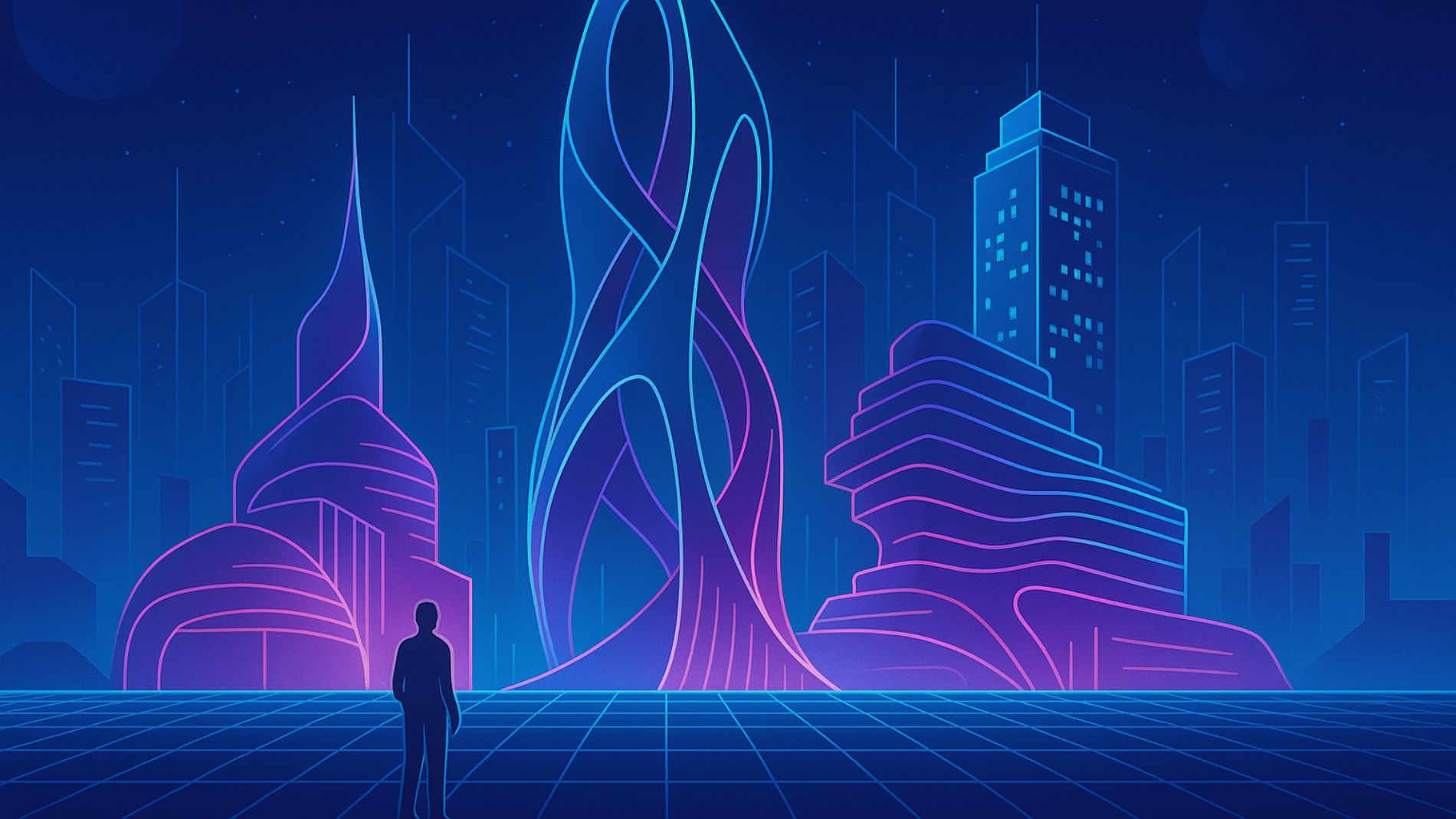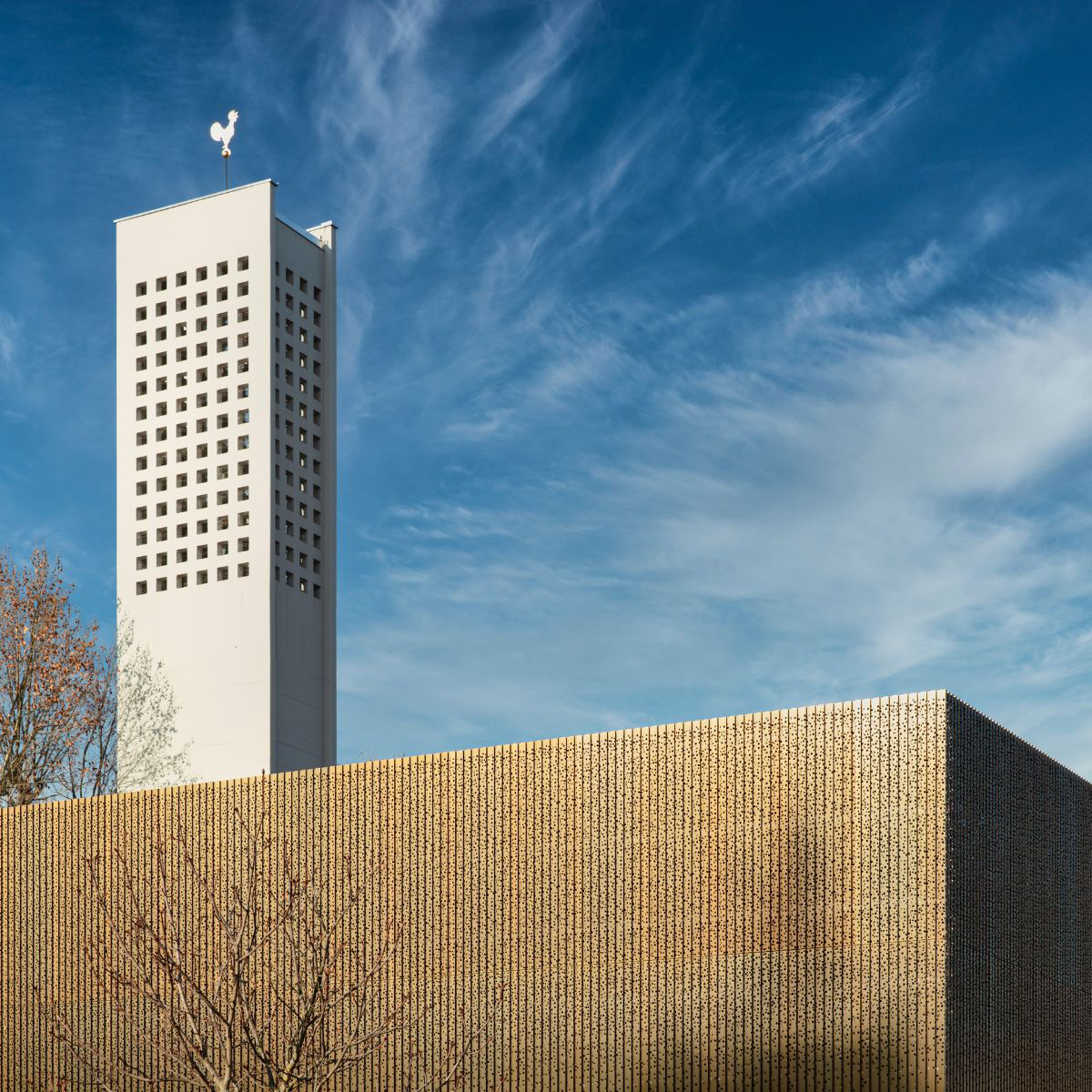Reading time: 7 minutes
From CAD to Immersive 3D Worlds
The digital revolution in architecture began in the 1980s with the transition from drafting boards to Computer-Aided Design (CAD). The 1990s saw the emergence of 3D modeling tools that enabled spatial representations on screen for the first time. Building Information Modeling (BIM) established itself from the 2000s onward as an integrated planning process that unites all building data in a single digital model.
The current paradigm shift is driven by the convergence of these technologies with Virtual Reality (VR) and Augmented Reality (AR). The metaverse refers to a collective virtual ecosystem based on persistent, real-time synchronized digital spaces where people can interact with each other.
"The metaverse is being built as we speak, rapidly. But who is designing it? Who should design it? My thesis is that the design of the metaverse falls within the remit of the discipline of architecture and the wider design disciplines." - Patrik Schumacher, Principal at Zaha Hadid Architects
For architects, the metaverse offers the opportunity not merely to visualize designs but to make them experiential – for colleagues, clients, and the public alike.
The Metaverse as an Architectural Laboratory
In the metaverse, many physical constraints of the real world disappear. Natural laws such as gravity or material load capacity can be modified, suspended, or reinterpreted. This freedom enables experimental designs that would be impossible or only achievable with enormous effort in the physical world.
Digital twins – virtual replicas of real buildings or districts – open new possibilities for simulation and optimization. They enable analysis of various scenarios:
- Energy efficiency and environmental impact
- User flows and space utilization patterns
- Acoustic and lighting properties
- Effects of extreme weather events
Particularly valuable is the immersive experience of architecture before realization. Building owners, users, and other stakeholders can virtually walk through and experience buildings before ground is broken. This improves communication and reduces costly changes during construction.
Innovative Metaverse Projects Globally
Leading architectural firms and institutions worldwide have become important innovation centers for metaverse architecture, each with distinctive approaches.
Pioneering Projects in Virtual Architecture
Zaha Hadid Architects' Liberland Metaverse represents one of the most ambitious virtual architecture projects to date. Designed as a "cyber-urban city," this virtual micronation allows residents to purchase vacant lots and access them through avatars. The project features hyper-realistic districts that promote urban self-governance while intentionally incorporating areas without urban planning to allow for "spontaneous order through a process of free discovery".
The Nakagin Capsule Tower Digital Preservation by Japanese digital consultancy Gluon exemplifies heritage preservation in the metaverse. The "3D Digital Archive Project" uses multiple measurement techniques to record this iconic example of Japanese Metabolism in three dimensions. Given the physical building's precarious state and incompatibility with current seismic regulations, this digital twin ensures the architectural legacy lives on virtually.
Virtual Singapore, managed by the Government Technology Agency (GovTech) and Singapore Land Authority (SLA), represents a comprehensive city-scale digital twin. This platform integrates high-resolution 3D modeling with real-time data, including BIM submissions from developers and extensive geospatial information, enabling advanced urban planning and policy simulation.
Academic Research Centers
MIT's Future Cities Laboratory has pioneered research in digital twins and metaverse applications for urban environments, developing frameworks that bridge physical and virtual architectural spaces.
ETH Zurich's computational approaches have advanced the integration of BIM, GIS, and IoT technologies to create comprehensive urban digital twins that enable real-time monitoring and predictive modeling.
| Region | Focus Areas | Example Projects |
|---|---|---|
Europe |
Heritage preservation, sustainable design |
Liberland Metaverse (Zaha Hadid), Digital heritage initiatives |
Asia |
Smart cities, digital preservation |
Virtual Singapore, Nakagin Tower preservation |
North America |
Research, commercial applications |
MIT Future Cities Lab, enterprise metaverse platforms |
Technologies and Tools for Architects in the Metaverse
AI-Based Design Tools and Generative Architecture
Recent research demonstrates that AI can automatically generate architectural spaces based on user activities in the metaverse. Machine learning algorithms analyze patterns from user behavior data to create customized virtual environments that reflect individual preferences and usage patterns⁷.
Generative design tools like Grasshopper and Dynamo have become industry standards, increasingly enhanced with AI components that optimize building geometries for specific factors including energy efficiency, material minimization, and lighting conditions.
Collaborative VR Platforms for Architecture Firms
The integration of BIM with real-time collaboration platforms has accelerated since 2020. Tools like Enscape VR, IrisVR, and The Wild enable architecture firms to work together on 3D models in real-time, regardless of physical location. These platforms facilitate immediate feedback and visualization of design changes.
Blockchain and NFTs in Architecture
Blockchain technology is establishing itself as an instrument for digital property rights in the metaverse. Research by Dounas et al. (2021) explores how architects can register virtual buildings as Non-Fungible Tokens (NFTs), documenting authorship verifiably and enabling new business models through smart contracts that automatically handle licensing and resale transactions.
Challenges and Critical Perspectives
Despite innovation dynamics, metaverse architecture faces substantial challenges requiring critical reflection.
Digital Divide and Accessibility
The advanced technologies for metaverse architecture place considerable demands on technical infrastructure and budgets. According to industry surveys, smaller firms struggle with technology adoption, with limited access to VR technologies and training opportunities. This creates a significant barrier to entry for independent architects and smaller practices⁹.
Data Protection and Ethical Questions
Processing sensitive building data in the metaverse raises complex privacy questions. The integration of BIM data with real-time IoT sensors creates vast datasets that require robust security measures. Research highlights concerns about data ownership, intellectual property protection, and the transparency of algorithmic decision-making processes in AI-driven design.
Balance Between Virtual and Physical Space
Critics warn of potential disconnection from real building contexts when architecture is primarily conceived for virtual environments. The challenge lies in maintaining the material, haptic, and atmospheric qualities that constitute physical architecture while exploring digital possibilities.
Future Perspectives: Architecture in the Metaverse 2030
Looking ahead to the coming decade reveals how the interface between architecture and metaverse could develop further globally.
Integration of Sustainability and Digital Innovation
Digital twins enable comprehensive simulation of climate-optimized building concepts. Research shows that integrating BIM with urban digital twins can reduce energy consumption by optimizing building operations and enabling predictive maintenance. Virtual material passports document resources for future recycling, creating a digital circular economy in architecture.
New Professional Profiles and Competencies
The emergence of "Metaverse Architects" as a specialized profession is already visible, with universities globally developing dedicated programs. These roles require expertise in computational tools, programming software, gaming engines, and an understanding of user experience in virtual environments.
Global Standards and Frameworks
International collaboration on technical standards and ethical guidelines for metaverse architecture is advancing. Research emphasizes the need for interoperability between different platforms and the importance of developing frameworks that ensure accessibility, sustainability, and user safety in virtual architectural spaces.










